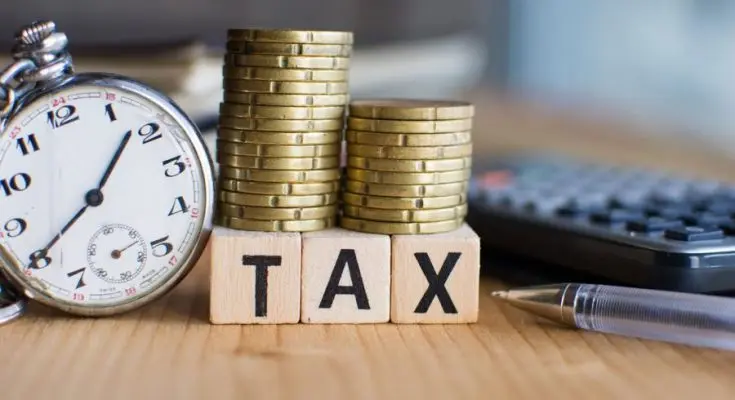African countries continue to refrain from implementing the model rules. According to the Organisation for Economic Cooperation and Development (OECD), Base erosion and profit shifting (BEPS) strategies have been used by multinationals (MNEs) to shift profits from higher tax jurisdictions to tax havens, thereby eroding the tax base of the higher-tax jurisdictions.
As such, the OECD’s Inclusive Framework on BEPS was adopted in 2013 by the OECD and G20 countries to produce a unified set of international tax regulations based on consensus to address BEPS. The initiative has now grown to include over 140 countries and jurisdictions.
Pillar 2 of the initiative establishes a global minimum tax rate of 15% for companies with revenue above €750 million or more in the Consolidated Financial Statements of the Parent entity in at least two of the four fiscal years immediately before the Fiscal Year assessed.
The Global Anti-Base Erosion Model rules (the model rules) established the regime for the global minimum tax rate. This article will discuss Nigeria’s perspective on the proposed global minimum corporate tax rate.
The Nigerian perspective on the Model Rules
The Model Rules lay out the scope and mechanisms of the Pillar Two system, including global corporate minimum tax rules, the Income Inclusion Rule (IIR), and the Under Taxed Payments Rule (UTPR). The Model Rules are expected to become effective by the domestic law of the respective jurisdictions by 2023.
The Model Rules and the 15% minimum corporate tax rate apply when a multinational enterprise (MNE) group makes an annual revenue above €750 million in at least two of the four years immediately preceding the test year. The Model Rules are projected to generate around USD 150 billion in additional global tax revenues each year.
Interestingly, notwithstanding the enormous potential of the model rules, only twenty-three (23) African countries out of one hundred and forty (140) countries are part of the OECD initiative as of 2021.
This underwhelming number results from many factors ranging from the practicality of the deal in the African sphere to the lack of transparency in the deal-making alleged by various African countries, including Nigeria.
Developing Countries Not factored into the Model Rules
Firstly, there are concerns raised by Nigeria and other developing nations that the deal, which was initiated and developed mainly by the G7 and the G20 nations, did not adequately consider the interests of developing nations.
This is also reinforced by the fact that several of the primary/ founding countries in the deal serve as host nations for the headquarters of the MNEs and their substantial group entities.
According to calculations by Oxfam, G7 and EU countries are expected to receive more than two-thirds of the revenue generated under Pillar Two, while the lower-income countries are expected to receive a mere 3% of the revenue. This poses serious issues for discussions as low-income countries generally rely more heavily on corporate income tax as a source of revenue.
Minimal Impact of Pillar 2 on Taxable Income
Perhaps the most significant issue for Nigeria and other developing nations is the limited impact of Pillar Two on taxable income. The Pillar Two rules set a minimum threshold of global turnover above €750 Million (N450 Billion Naira).
Considering that many of the MNEs merely have a digital presence in Nigeria, many MNEs would immediately fall out of the threshold. As stated by the Group Lead of the Nigerian Federal Inland Revenue Service, only about six foreign companies operating in Nigeria would surpass the threshold in the Model Rules.
While the Model Rules are expected to serve as an alternative to the Digital Service Taxes introduced by several nations, Nigeria has introduced, through the Finance Act, the concept of Significant Economic Presence (SEP), which seeks to consider the scope of a company’s economic activities in Nigeria to ascertain its taxable presence.
Under this, Non-Resident Companies (“NRCs”) providing services in Nigeria will be taxed if they have a SEP and have earned profit from their business in Nigeria. The threshold for taxation is a gross turnover above ₦25 million or its equivalent (about US$65,8761) compared with the threshold of €750 Million (N450 Billion Naira) as required by the Model Rules. This will include multinational companies like Facebook, Twitter, Google, and Netflix.
More importantly, the adoption of Model Rules will mean the removal of several tax incentives (such as the Pioneer Status Incentive established for the development of certain critical industries in Nigeria) introduced to attract Foreign Direct Investments (FDIs), which are critically needed to develop core sectors of the Nigerian economy.
With the initiative, global companies may be deterred from investing in Nigeria. FDIs are particularly crucial for Nigeria in light of the active population of the Nigerian market and the current economic challenges businesses face.
From the issues highlighted above, this writer believes that the Model Rules are not particularly beneficial for Nigeria in its present form. Nigeria’s current corporate tax regime in conjunction with the SEP rules under the Finance Act of 2019 has brought the majority of the large MNEs into the tax net at a higher tax rate than what is currently proposed by the Model Rules.
Recommendation and Conclusion
Although the SEP Rules introduced by Nigeria bring a lot more MNEs into the tax bracket, the writer believes that the Model Rules may be more beneficial in the long run with appropriate modifications that recognize the unique perspective of developing economies.
To get the best possible result from the initiative, the government should together with other African nations and bodies such as the African Tax Administrators Forum (ATAF) to engage the Members of the OECD/G20 Inclusive Framework on BEPS to drive an all-inclusive plan that takes into consideration the peculiar situation of developing economies.






